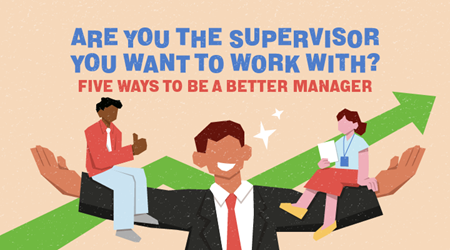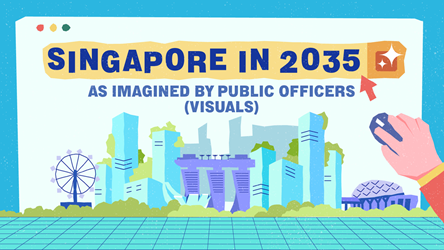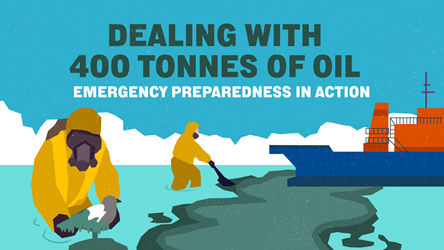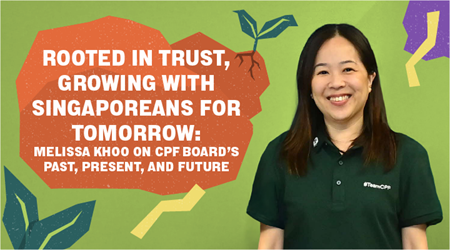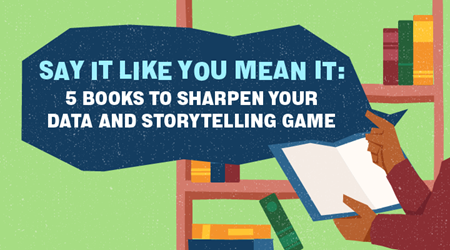Instruction Manual: All About Resilience At Work

Jargon Watch
Tech Jargon
BYOD: Bring your own device. A term for allowing employees to use personal mobiles in their workplaces instead of company-provided devices. While BYOD has been credited for improving productivity through flexibility, it may also increase a company’s vulnerability to security risks and data leakage.
Resilience Quotient: A measure of an individual’s capacity to bounce back from challenges and setbacks. It is usually assessed through a questionnaire that may relate a person’s working style and personality to different scenarios.
Public Service Jargon
CRM: Career Resilience Model. A model developed by the Institute of Adult Learning, Singapore (an institute of SkillsFuture Singapore) that helps people determine their ability to manage their careers and adapt to the changing work environment. The model considers seven attributes including adaptability, guanxi (social capital) and skill-sets.
Robustness: In the context of an organisation, it refers to the ability of a company to respond quickly to unexpected changes or challenges, recover and take advantage of business opportunities that arise from disruptions with efficient decision-making.
Say It Like This
Router: A hardware device that creates a network between computers. In British English, it is pronounced as “ROO-TER”. In American English, it is “RAO-TER”.
Ask A Pro
The ABCs to being resilient

Management consultant and author Wendy Tan shares tips for bouncing back from challenges and adversity.
How can we learn to be resilient, no matter the situation?
How does a tree grow tall and strong to withstand strong winds? It’s the roots. The broader and deeper the roots, the taller and stronger the tree. What are your “roots”? This is what anchors you in difficult times. Your anchor can be your values (e.g., a “never say die” attitude), your sense of purpose or your responsibilities.
In difficult situations, ask yourself, “What matters most?” or “When I am on my deathbed, what would the older and wiser ‘me’ advise the younger ‘me’ now?” Your answer will help you see the issues from a more distant and holistic perspective. Without the emotional clouding on the issue, we can see better to act productively.
How can I start building up my resilience, especially in the workplace?
In my book Wholeness in a Disruptive World, I talk about anchoring, balancing and clearing towards wholeness. I define wholeness as a sense of balance and completeness within ourselves and the world around us.
Wholeness helps us be resilient, productive and enjoy life (that includes work). To be resilient, first anchor yourself to what matters, balance your thinking to embrace opposites, and clear your mind to focus on what is most helpful in the present moment.
I have talked about anchoring in the previous question. Balancing is not about getting a 50:50 compromise or an either/or forced choice. Instead balancing is to embrace the opposites 100:100 over time. For example, to be resilient, I need to work 100% and rest 100%. Of course you can’t do both at the same time. But over time, we can work hard and play hard. This helps us be successful in our work and also have the energy to enjoy our personal lives and feel recharged for work. This alternating across opposites gives us a dynamic balance.
The third is clearing. Clearing is to empty out and connect to the present moment or the person in front of us. Clearing is purposefully non-doing, the opposite of being mentally cluttered. When we clear our mind, we can see the issues better and make better decisions. Some ways to clear ourselves are exercising, playing music, journaling or engaging in hobbies. When was the last time you cleared your mind? Hint: The answer should not be “during my vacation last year”. Engage in one of these clearing activities at least once every day.
How can we use technology to bounce back from adversity?
Technology is one of today’s stressors with people often being distracted by them. However, if we use our gadgets intentionally, they can be very helpful. For example, there are many apps that help us clear our mind and focus on our breathing or help us sleep better. Breathing is one of the simplest yet neglected ways for us to clear negative thoughts and recharge ourselves. Simply breathing in and out deeply gives us energy.
In Numbers
How can you make your employees happier?

- 67% of employers in the Asia-Pacific believe that their benefit packages are highly valued by employees;
- But only 45% of employees agree that employer benefits package meets their needs;
- And 40% agree that benefits offer diversity and flexibility that tailor to their needs.
Source: Willis Towers Watson’s 2017/2018 Asia Pacific Benefits Trends survey

According to the Ministry of Manpower’s Conditions of Employment 2018 study, staff turnover can be reduced by having:
- Flexible work arrangements
- Annual leave entitlement of at least 15 days
- No more than five-day work week
- Offering non-statutory leave (such as family care leave, child sick leave)
Source: Ministry of Manpower Conditions of Employment 2018
- POSTED ON
Feb 26, 2019
- TEXT BY
Wong Wing Lum
- ILLUSTRATION BY
Brenda Lim




